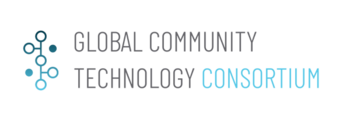Green Horizons: Difference between revisions
No edit summary |
No edit summary |
||
| Line 2: | Line 2: | ||
|image=ZeroCarbonUrban Design.jpg | |image=ZeroCarbonUrban Design.jpg | ||
|team=Green Urban Design, Code PDX, Urban.Systems | |team=Green Urban Design, Code PDX, Urban.Systems | ||
|leader=Wilfred Pinfold | |leader=Wilfred Pinfold, Charles Kelley, Jiri Skopek, Barrett Kinney. Hugh Harker | ||
|imagecaption=Zero Carbon Urban Design | |imagecaption=Zero Carbon Urban Design | ||
|municipalities=Portland OR | |municipalities=Portland OR | ||
Revision as of 01:08, December 6, 2024
| Green Horizons | |
|---|---|

| |
 Zero Carbon Urban Design | |
| Team Organizations | Green Urban Design Code PDX Urban.Systems |
| Team Leaders | Wilfred Pinfold Charles Kelley Jiri Skopek Barrett Kinney. Hugh Harker |
| Participating Municipalities | Portland OR |
| Status | Master Planning |
| Document | None |
Description
The Green Horizons Initiative is a multifaceted effort to foster economic vitality, environmental sustainability, and community resilience in the Urban Flood Safety & Water Quality District (UFSWQD) communities of North Portland. It encompasses projects like the Workforce Development and Vehicle Electrification Center, which aims to create jobs in emerging technologies, transition to a greener economy, and enhance community infrastructure, and the Community Engagement and Resilience Program, which focuses on empowering under-resourced neighborhoods through education, capacity-building, and strategic investments. By integrating workforce training, sustainable development, cultural competency, and environmental justice, the initiative seeks to leverage electrification and infrastructure improvements to build equitable, resilient, and vibrant mixed-use neighborhoods.
Challenges
The initiative faces several challenges, including economic instability and environmental vulnerabilities in under-resourced North Portland communities, such as air pollution from industrial zones, limited green spaces, and insufficient public transportation. These issues hinder access to job opportunities and essential services, exacerbating social isolation and economic inequities. The area’s mixed residential, commercial, and industrial zones lack sufficient business and recreational options, while looming gentrification threatens to displace long-time residents. Additionally, addressing natural hazards like flooding, fostering equitable engagement across diverse stakeholders, and building the capacity of communities to leverage electrification investments require overcoming significant logistical, environmental, and socio-economic barriers.
Solutions
The initiative addresses these challenges through strategic investments in workforce training, infrastructure, and community engagement to create equitable, sustainable neighborhoods. It proposes establishing a Workforce Development and Vehicle Electrification Center to train residents in emerging technologies like electric vehicle systems and clean energy, while fostering partnerships with industry and government to create jobs and reduce carbon emissions. The initiative also includes a Community Engagement and Resilience Program to empower residents through culturally competent workshops, capacity-building tools, and digital platforms, ensuring that development reflects community needs and values. By integrating electrification, multi-modal transportation, and resilience planning, the initiative aims to reduce environmental vulnerabilities, enhance accessibility, and support economic growth without displacing existing residents.
Major Requirements
The initiative requires extensive collaboration among industry, government, nonprofits, and community stakeholders to ensure its goals of economic growth, sustainability, and equity are met. It demands comprehensive planning, including site assessments, hazard mitigation strategies, and integration of EV charging and solar infrastructure. Successful implementation relies on community-led engagement workshops, cultural competency training, and accessible digital platforms to involve diverse voices. Additionally, it requires the development of advanced vocational training programs in emerging technologies and the establishment of benchmarks and accountability measures through Holistic Key Performance Indicators. Substantial investments in infrastructure, transportation, and workforce programs are essential to address environmental challenges, economic disparities, and resilience needs.
Performance Targets
| Key Performance Indicators (KPIs) | Measurement Methods |
|---|---|
|
|
Standards, Replicability, Scalability, and Sustainability
The initiative aligns with existing standards for sustainability, workforce development, and community resilience, such as those set by the National Institute of Standards and Technology (NIST) and transportation electrification guidelines from industry bodies. It adheres to environmental standards for reducing greenhouse gas emissions, implementing renewable energy, and mitigating flood risks. The initiative also seeks to establish new standards, including Holistic Key Performance Indicators (H-KPIs) to benchmark equitable development, resilience metrics for community hazard preparedness, and vocational training curricula for mechatronics and EV systems. Additionally, it aims to deploy and refine standards for equitable community engagement, integrating cultural competency, digital communication, and inclusive urban planning, while setting benchmarks for scalable and replicable clean energy solutions in mixed-use districts.
Cybersecurity and Privacy
The initiative faces cybersecurity challenges in safeguarding the digital systems integral to its infrastructure, such as EV charging networks, smart grid integration, and data platforms for community engagement and resilience planning. These systems are vulnerable to cyber threats, including data breaches, service disruptions, and unauthorized access to operational controls. To address these challenges, the initiative presents opportunities to deploy advanced cybersecurity measures, such as secure communication protocols, robust access controls, and real-time threat monitoring. By integrating these technologies, the initiative can enhance trust among stakeholders, ensure the integrity of critical infrastructure, and establish best practices for cybersecurity in sustainable urban development, creating a replicable model for secure and resilient community systems.
Impacts
The initiative will drive significant economic, environmental, and social impacts in the Urban Flood Safety & Water Quality District (UFSWQD) communities. Economically, it will create equitable job opportunities in emerging fields like electric vehicle systems and clean energy, fostering workforce readiness and attracting investments. Environmentally, it will reduce greenhouse gas emissions, enhance climate resilience through sustainable infrastructure, and promote greener transportation options. Socially, it will empower underrepresented communities through inclusive engagement, capacity-building programs, and equitable access to improved services and public spaces. By addressing systemic challenges such as environmental vulnerabilities, economic instability, and displacement risks, the initiative will contribute to building vibrant, resilient, and sustainable mixed-use neighborhoods.
Demonstration/Deployment
The best way to demonstrate the Green Horizons Initiative is through a combination of tangible pilot projects, community engagement activities, and measurable outcomes. Here’s an approach:
- Pilot Projects: Launch small-scale, high-impact pilots such as converting the initial fleet of Washington Park Circulator Buses to electric vehicles, installing EV charging stations powered by solar energy, or developing a workforce training program in mechatronics. These pilots can showcase the initiative’s viability and benefits while serving as proof-of-concept for scalability.
- Community Engagement: Host interactive workshops, town hall meetings, and live demonstrations to involve community members, gather feedback, and foster collaboration. Emphasize inclusivity by highlighting the participation of underrepresented groups and demonstrating cultural competency in planning efforts.
- Showcase Results: Use data visualization and storytelling to highlight measurable progress, such as greenhouse gas reductions, jobs created, and infrastructure improvements. Develop case studies and videos to share success stories that resonate with stakeholders and illustrate the initiative's impacts.
- Interactive Experiences: Create a physical or virtual model of the proposed Workforce Development and Vehicle Electrification Center, including features like EV charging, solar integration, and multi-modal transport hubs, allowing stakeholders to visualize the future impact.
- KPIs and Reporting: Present clear metrics and benchmarks through Holistic Key Performance Indicators (H-KPIs) that quantify progress in sustainability, equity, and resilience. Regularly share updates and transparent reports to build trust and demonstrate accountability.
This combination of practical examples, active community involvement, and transparent metrics will effectively showcase the initiative's potential and build momentum for broader support and implementation.
Projects Related to this Initiative

|
Community Engagement and Resilience Program | |
| This project aims to address the pressing challenges faced by economically disadvantaged and environmentally vulnerable communities in North Portland. These communities struggle with limited access to jobs, essential services, and face environmental hazards such as air pollution and lack of green spaces. The program seeks to empower local residents and businesses by providing workforce training in sustainable fields like vehicle electrification, energy efficiency, and urban design, while also fostering community-led engagement to improve resilience and promote equitable economic opportunities. | ||

|
EcoMotion: Electrifying Washington Park's Circulator for a Greener Future | |
| This project converts five existing Ford transit buses to electric power. This conversion not only reduces cost over buying new it ensures the gasoline engine is removed from the road and recycled instead of being sold for another use. It also retains the chassis and other equipment saving emissions over a new purchase. | ||

|
Green Horizons: Urban Workforce Development and Electrification Center | |
| The Green Horizons Workforce Development and Vehicle Electrification Center is pursuing a planning grant that aims to establish a positive sustainable economic impact for the Multnomah County Drainage District community. This project will produce an assessment plan for a combined workforce training and commercial grade EV fleet conversion facility. | ||